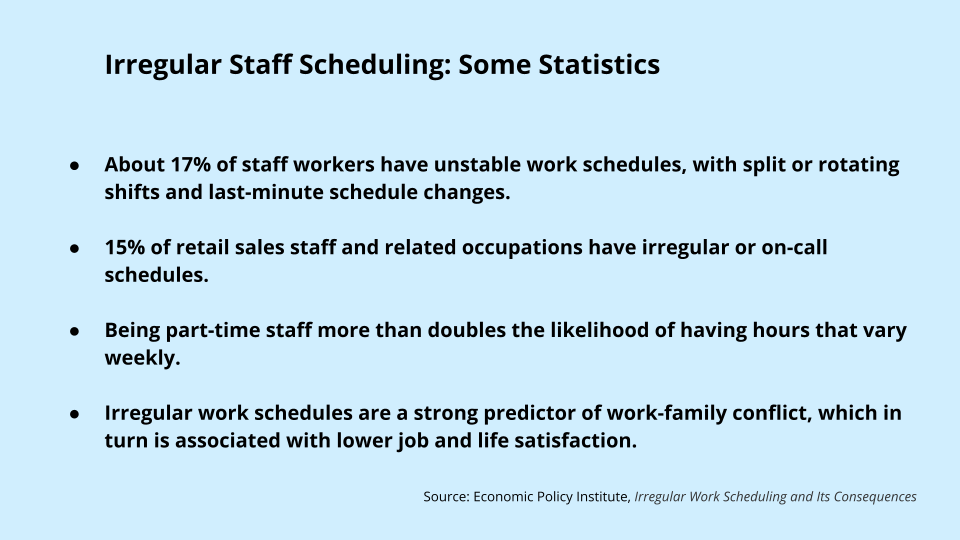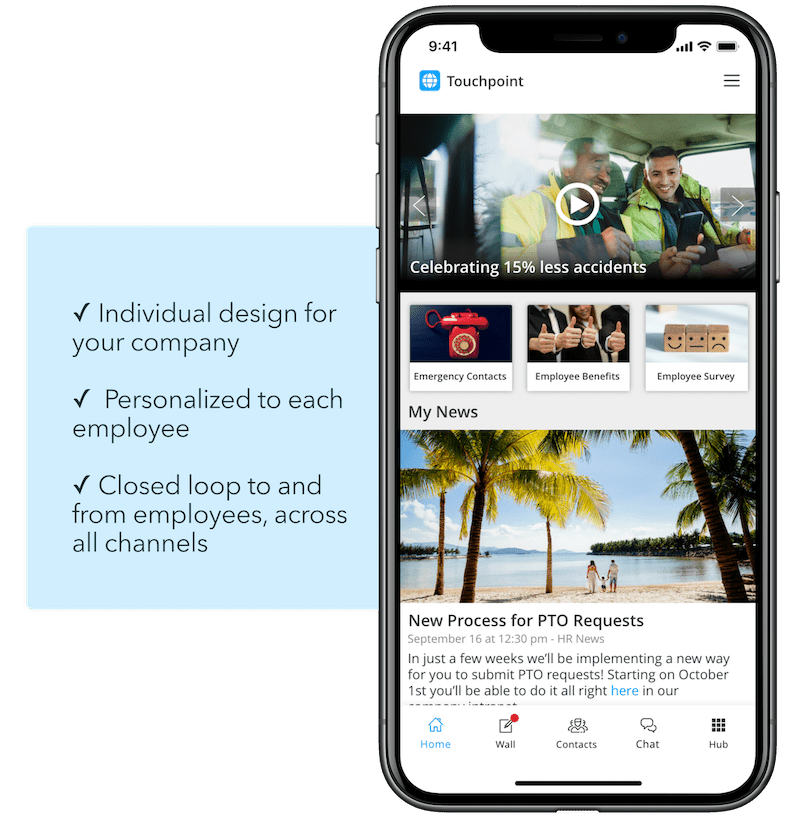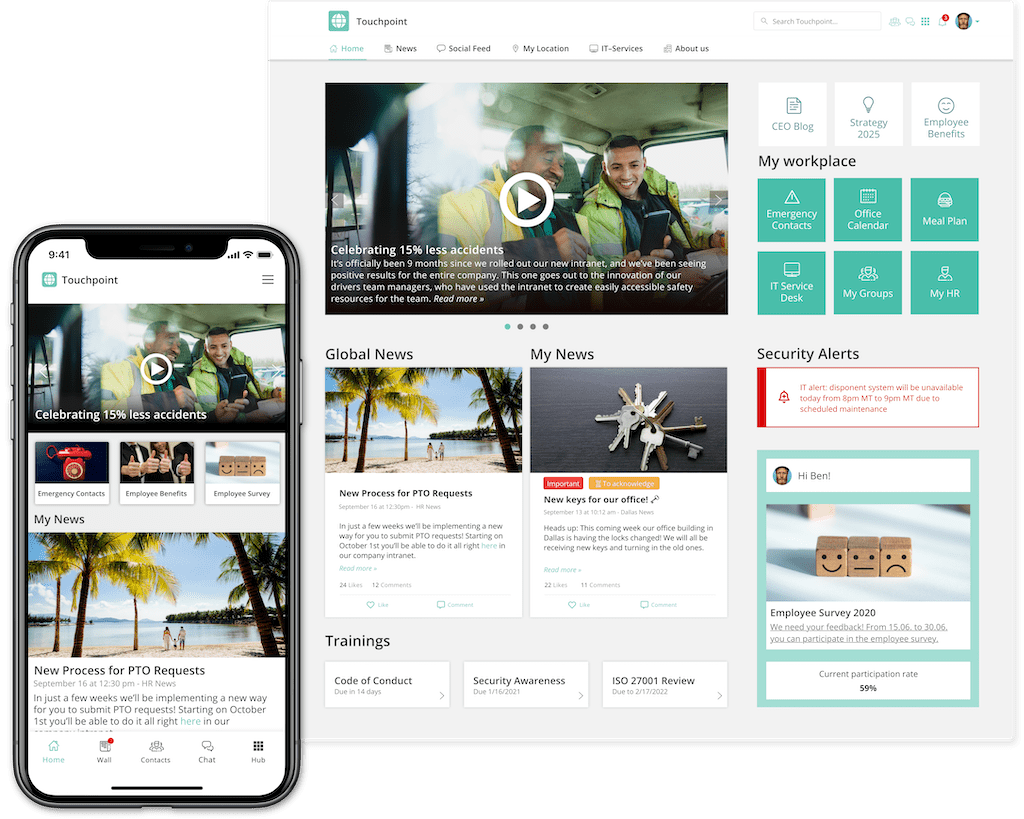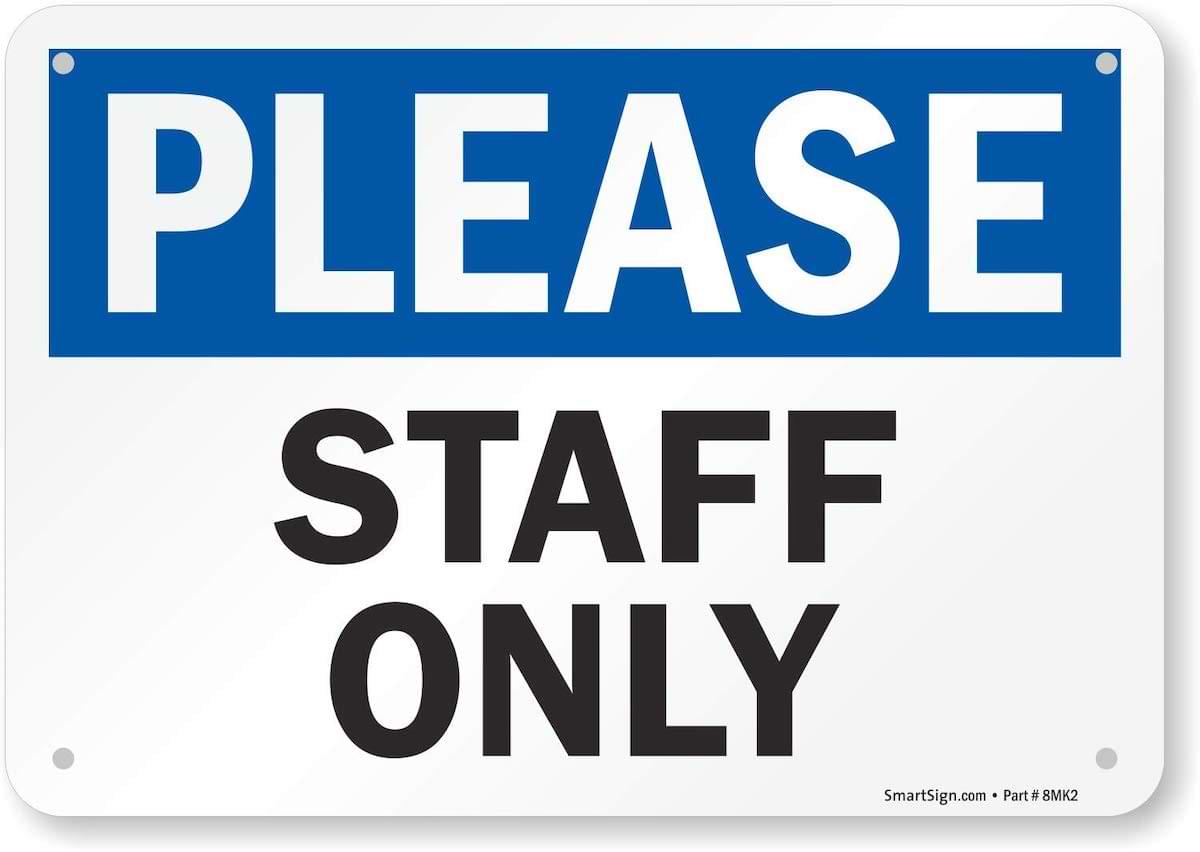When talking about staff communication, it probably helps to first define who we're talking about when we talk about staff.
All staff are workers, but not all workers are staff — or even employees. Staff jobs are disproportionately service occupations or those in the retail and wholesale trade industries. We’re talking about hospitality and leisure staff, warehouse staff, restaurant staff, retail or grocery store staff, airport staff, etc.
Unfortunately, staff workers are often thought to be dispensable, but the truth is that these “invisible” laborers are essential drivers of their respective businesses and as such have been woefully ignored for too long by internal communications.
And there's evidence that they've had enough. The Atlantic reports that in May of 2021, "for every 100 workers in hotels, restaurants, bars, and retailers, about five of them quit." Is our post Covid world witnessing "a fundamental shift in the relationship between employees and bosses that could have profound implications for the future of work"? Or is this staff rebellion due to more chronic issues?
Highly Important but Under Appreciated
Staff workers typically have no regularly set schedule. They may be full-time, part-time, or seasonal, but either way, their hours generally vary from day to day and week to week. Or they may be shift workers who work at different times of the day or night. This in and of itself can be problematic. According to a study by the Economic Policy Institute, irregular working hours are a strong predictor of work/family conflict, which in turn is associated with lower job and life satisfaction.

Staff workers might be contractors or even volunteers. And their jobs tend to be more blue-collar than white-collar. But the one thing all staff workers have in common is that the kinds of work they do make them difficult to reach quickly, collectively, and with any kind of certainty that they’re getting the information they need. Not exactly a formula for strong engagement.
And so, regarding these workers, it’s fair to ask: Are they always in the loop with communication that’s essential to their jobs? And if not, isn’t it about time that changed?
1. What is staff communication (and how does it differ from regular employee communication)?
Staff communication, unlike communication with so-called "knowledge workers" and rank-and-file employees, is trickier to successfully achieve. More traditional (meaning old-fashioned) means of communication have typically been the go-to methods of sharing information with staff workers. Bulletin boards, terminal displays, in-person staff meetings, word-of-mouth. You get the idea.
The responsibility of sharing information from higher corporate levels has usually fallen to line managers. They do their best to keep their staff up to date with a constant flow of essential comms, including schedule updates, location assignments, product news, or other practical, job-specific information. But it leaves little time for communication on a more personal level, further harming overall job satisfaction.
Despite these problems, traditional staff communication has worked for decades (unless for any number of reasons it sometimes didn’t). But it has only survived because there have been no better options. Today, it’s plain to see that these methods weren't the most efficient and reliable way to communicate and connect with staff.
Surely there are better options available in our mobile, digital age.

2. What are today’s top choices for staff communication (and do all of them work)?
Staff Meetings
There's no denying the effectiveness of meetings for delivering crucial messages. And of course there are the added benefits of face-to-face interaction. But if you have a dispersed workforce, as most staff tends to be, then good luck getting everyone in the same room at the same time.
Meetings are a top-down communication channel that can only reach attendees. Sure, meetings are great (assuming they're kept to a minimum), but they simply don't work in terms of regularly and fully communicating with with remote, distributed staff.
Despite repeated claims that email is dead or dying, it's still a central communication channel in most organizations. And it's easy to see why. Email is fast, it's accessible on any device — including mobile — and it's easy to use.
So, as long as email remains part of a multi-channel communication strategy, communicators need to be using it as effectively as possible. But that can be a challenge with staff workers.
Start with this question: "Do all of my staff members have company email addresses?" If the answer is no, then perhaps it's better to look elsewhere for a comms solution. If it's yes, then there are lots of ways to do email right.
Bulletin Boards
They're cheap, local, and easy to use, but they define old fashioned when it comes to reach, speed, interaction, and analytics. Nor are they of any use to staff workers who'll never see them. For those who do, there's no way to measure the actual reception of messages or to use bulletin boards to communicate information in sudden crisis situations.
Basically, if you expect a bulletin board to effectively spread company news to your entire staff, then you should assume they're going to be under-informed.
Terminal Displays
This modern update on the traditional bulletin board is a decent option if you have a lot of visual content and staff workers concentrated in one place, such as a factory floor. However, it's not a mobile solution and it's limited in many ways, starting with reach.
Terminal displays will often only be effective as a supplementary channel.
Collaboration Software
Use of the collaboration platforms Slack and Microsoft Teams exploded during the Covid-19 pandemic. In less than a year, their use drove digital transformation in the workplace at an exponential rate. But as we’ve argued elsewhere, although these tools brought together a suddenly dispersed workforce, they weren’t truly created for internal comms.
Yes, companies have tried using them for that purpose, but anyone who’s ever scrolled endlessly through an array of Slack channels — searching for that one crucial bit of information — knows that collaboration software can create as many headaches as it alleviates. Especially when you try stretching its use beyond its intended capabilities.
Find your digital collaboration sweet spot, but leave the company-wide comms and critical news and information sharing to channels better suited to that specific purpose.
Employee Apps
As we've said, leveraging mobile app technology can play a huge role in effectively reaching employees, connecting an internal communication strategy with your staff, and helping today's companies thrive despite disruptive workplace transformation.

Employee apps have amazing benefits and one awesome superpower: push notifications. Push can be an effective and secure channel for connecting dispersed staff workers who lack corporate email addresses or regular access to desktop computers. These are exactly the types of workers we discussed at the start of this article: non-desk and/or remote staff, freelancers, non-contract employees, temps, etc.
One in four Americans will work remotely in 2021. An employee app can provide them with easy access to corporate information and workplace tools. App content can be targeted for practicality and relevance, and it has the potential to promote the kind of alignment and engagement that has typically eluded staff workers.
Multi-Channel Intranets
I know what you're thinking: Didn’t this guy just say that staff workers generally don't have intranet access? Yes, I did. And they don't. But the beauty of a multi-channel intranet is that it can reach the employees working at desks as effectively as it does your remote staff via their mobile devices, be they privately owned (BYOD) or supplied by the company.

A variety of channels ensures that your intranet is accessible to all:
- News and information can find employees where they are, not the other way around.
- Comms can reach all touchpoints in all channels.
- The option exists to "push" comms to specific channels.
- There's a single place to create and manage all news and messaging.
3. What are some tips for effective staff communication?
Hopefully, the benefits of improved staff communication are obvious. Happier, more knowledgeable and self-reliant employees; improved engagement; better alignment across locations and/or regions; greater connectedness. . . . The list goes on and on.
But making it all happen is a different story. We've mentioned some of the methods that companies are using to communicate with their staff, but knowing what works in your particular business is something you'll have to figure out on your own.
Much of this effort can and probably should come from your internal communications team. If that means you, then. . . .
Ask yourself the following questions:
- Are all of my messages being received?
- Am I reaching everyone I need to reach?
- Do I understand my internal audience?
- Do I know which comms channels my staff prefers?
- Can my staff provide easy, instant feedback? Can I?
- Does my staff have a platform for creating and enabling genuine connections?
If the answer is "no" to any of the above, then chances are you're not communicating as effectively as you can and probably should be. But here's a pro tip: By harnessing the power of a mobile communications tool, be it an employee app or a multi-channel intranet, it's going to be much more likely that you or your internal comms team will be able to answer all of the above questions with a strong, resounding "yes."





